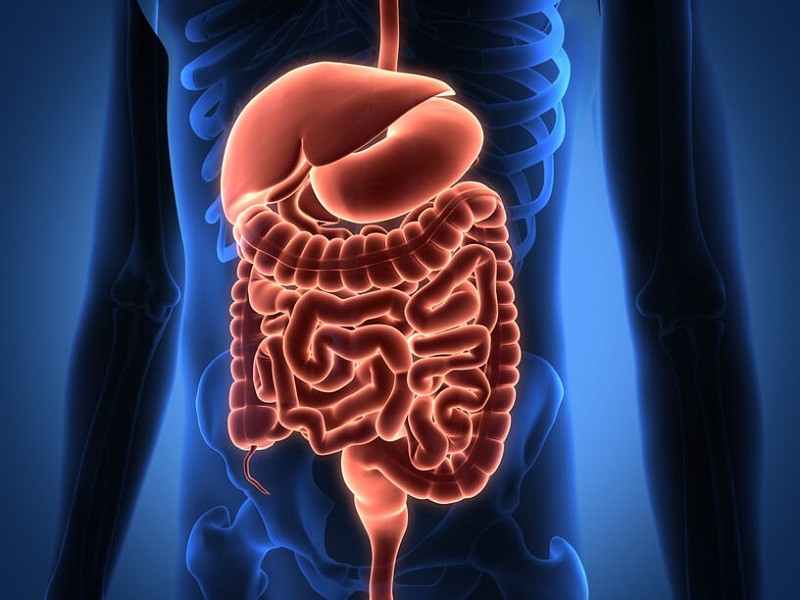The components of Probiotic Bacteria Spores support Digestive Function
Sep 17, 2023

An enzyme (commonly referred to as a catalyst) is a general term for biological catalysts primarily composed of proteins, formed within the cells of living organisms. Enzymes exist everywhere there is life, whether in the human body, animals, plants, or any place where life exists.
Enzymes play a crucial role in all essential activities required to sustain life, such as synthesis, decomposition, substance transport, detoxification, and energy provision.
In the human body, two main types of enzymes are produced: digestive enzymes and metabolic enzymes. Digestive enzymes are secreted in salivary glands, the stomach, the pancreas, and the small intestine to aid in food digestion. On the other hand, metabolic enzymes are produced within cells, assisting the body in synthesizing and utilizing energy. These energies play a particularly vital role, enabling humans to breathe, think, and move.

Most enzymes have a globular (spherical) shape, with a wide range of molecular weights ranging from 12,000 daltons to 1,000,000 daltons or more.
Enzymes are soluble in water and when dissolved, they form a sticky solution. Enzymes also dissolve in dilute salt solutions, glycerin, and various organic solvents with different polarities. Enzymes are not stable and can easily denature at high temperatures. When denatured, enzymes lose their catalytic activity.
Enzymes are composed of two parts: the protein part (referred to as apoenzyme) and the non-protein part (referred to as coenzyme). Coenzymes directly participate in catalytic reactions, determining the type of reaction and enhancing the stability of the apoenzyme against denaturing factors.
Apoenzymes enhance the catalytic activity of coenzymes and determine the specificity of the enzyme.
Today, enzymes are recognized as a crucial key to maintaining good health. Enzymes essential for daily life are formed directly within the cells of living organisms. Scientists have conducted extensive research on enzymes, but many questions remain unanswered. What is known is that living organisms continuously produce numerous enzymes to meet the body’s needs, yet the mechanism of enzyme formation within cells is still not fully understood.

Our human body contains more than 5,000 types of enzymes, each with over 25,000 different functions. Every activity within our body, such as digestion, absorption, even simple movements of our limbs and thoughts, is controlled by enzymes.
Fundamentally, the mechanism of enzyme activity in the body can be expressed through the following formula:
E + S → ES → P + E
In this formula: E represents Enzyme – acting as a catalyst; S stands for Substrate – the compounds affected by the Enzyme; ES is the Enzyme-Substrate complex; P represents the Product.
According to this formula, the enzyme’s activity (catalysis) goes through three stages:
The digestive system functions through the coordination of various organs. These organs take in food and liquids, break them down into simple substances such as proteins, starches, fats, and vitamins, which are then transferred to the small intestine and absorbed into the bloodstream to nourish the body. This entire process requires the involvement of enzymes.
There are three types of enzymes involved in this process.
These enzymes play a crucial role in the generation of new cells, repair, and maintenance of damaged cells, tissues, and organs. The pancreas is the main organ responsible for producing and secreting metabolic enzymes in the body.

One of the most crucial functions of metabolic enzymes occurs in the blood, where they process nutrients provided by food and distribute them to all parts of the body.
Therefore, metabolic enzymes have three primary roles:
These enzymes are secreted in the salivary glands, stomach, pancreas, and small intestine. Their primary function is to digest the food ingested into the body, making them critically important for the health of the digestive system.

Many people do not have a balance of digestive enzymes in their bodies, leading to various digestion-related issues such as acid reflux, bloating, or a feeling of stomach discomfort after meals.
There are three main digestive enzymes considered the most crucial for health:
Also known as organic enzymes, these enzymes are present in fresh food consumed by the body through meals, aiding in the breakdown of food by digestive enzymes.

Food enzymes often require the collaboration of vitamins and minerals to become coenzymes and ensure their proper functioning.
As humans age, they gradually lose the ability to produce enzymes, and the available enzyme levels in the body decrease every 10 years. Absorbing food enzymes also becomes more challenging.
Professor and Doctor Hiromi Shinya (Professor of Surgery at Albert Einstein College of Medicine, Chief of the Endoscopy Unit of Beth Israel Hospital) – the author of the famous series of books – ‘The Enzyme Factor,’ shares a similar view. He calls the enzymes produced in the body “miracle enzymes.” These miracle enzymes are the primary enzymes produced in the body and have the potential to become any specialized enzyme before they are transformed into a specific function. Professor Hiromi Shinya asserts that, to live a long and healthy life, it is best not to consume these “miracle enzymes.”
In his book ‘The Enzyme Factor – A Guide to Food and Medicine in Your Kitchen,’ Professor Hiromi Shinya instructs readers on how to ‘save’ these miracle enzymes. His method is a healthy diet. He points out that, apart from the over 5,000 enzymes present in the body, we can supplement enzymes through food.
Professor Shinya recommends a diet consisting of: 85-90% plant-based foods (50% whole grains like rice, legumes; 30% vegetables and tubers; 5-10% fruits and seeds), and 10-15% animal protein (fish, eggs, soy milk, limited amounts of red meat and poultry). Additionally, he suggests the consumption of herbal teas, seaweed, beer yeast, pollen and honey, as well as supplements of vitamins and minerals. He emphasizes the use of fresh and recent foods since they contain the most enzymes.

Professor Hiromi Shinya’s argument in his book ‘The Enzyme Factor – Practice’ suggests that when a specific part of the body consumes a large amount of specialized enzymes, there is a deficiency of enzymes in other parts of the body. Professor Hiromi Shinya also points out that in the body, the activity that consumes the most enzymes is the “detoxification” process. Therefore, those who detoxify more also consume more enzymes. As a result, the body may lack enzymes to maintain health and become more susceptible to diseases.
The organ responsible for detoxification in the body is the liver. When the liver operates at full capacity, it requires a significant amount of enzymes. At that point, the body automatically takes enzymes from other parts to perform detoxification. Excessive toxins can exhaust and damage the liver. This is one of the reasons why a damaged or overworked liver can make us feel tired and lacking in vitality.
Modern dietary habits, such as overcooking, frequent consumption of fried and fast foods, foods containing pesticides and preservatives, or habits like alcohol and tobacco consumption, exposure to a toxic living environment, stress, and more, are the factors that make the liver work continuously and at full capacity to detoxify. Naturally, this consumes a large amount of the body’s enzymes.
Therefore, it can be easily understood that to live a long and healthy life, we need to ‘save’ the ‘miracle enzymes,’ also known as the body’s reserve enzymes. To conserve these reserve enzymes, it is essential to regularly supplement foods rich in enzymes, limit foods containing harmful substances to reduce the detoxification process’s burden. Additionally, using digestive enzyme products can support the breakdown and absorption of nutrients, aid in detoxification, and reduce the burden on the liver.
AICARE Enzymes are products of AiCarePro, a brand based in Vietnam with global operations.
AICARE Enzymes contain a combination of Veg-Panzyme Plus enzymes, including Protease, Amylase, Cellulase, and Lipase. These enzymes catalyze reactions that break down complex molecules into corresponding simpler ones, enhancing nutrient absorption and improving the user’s overall well-being. This ability also supports the digestive function, accelerates metabolic processes, reduces the liver’s burden, and minimizes the causes of liver-related diseases.

The combination of enzymes in AiCare Enzymes also helps the body use fewer “miracle enzymes,” ensuring the smooth operation of other parts of the body.
Protease is a protein-digesting enzyme, and it also breaks down fragments from parasitic cells, fungi, bacteria, viruses, and the protein membranes of cancer cells.
Amylase is an enzyme found in saliva and the pancreas that plays a role in digesting starch, breaking starch into shorter polysaccharides and oligosaccharides, and ultimately into glucose. Amylase facilitates the rapid and efficient digestion and absorption of starch in the small intestine.
Cellulase is an enzyme capable of breaking down cellulose (fiber). This enzyme is not naturally found in the human digestive system. Supplementing with cellulase enzyme helps soften the fiber in fruits, vegetables, or other high-fiber foods, supporting digestive system function and preventing constipation.
Lipase is an enzyme that aids in the digestion of fats and facilitates the absorption of essential nutrients that are soluble in fat, such as Omega-3 and Omega-6 fatty acids, vitamin D, vitamin K, Lutein, and Gamma Tocopherol (Vitamin E). Lipase, especially the kind found in AiCare Enzymes, is challenging to extract, making it a valuable component not easily found in other products on the market.
In addition to the exclusive enzyme blend, Enzymes AiCare also contains specialized ingredients for liver support. It includes Silymarin (at 80% purity), extracted from Milk Thistle, along with ingredients like Dandelion root, choline, and vitamin B6, creating a comprehensive formula that enhances liver detoxification, provides antioxidant protection, prevents oxidative damage to liver cells by free radicals, restores liver function, and promotes overall health.
Product Price: 480,000 VND per box
Product Packaging: 1 box contains 6 bottles x 60ml each
Dosage Form: Liquid for consumption
Manufacturer: AiCarePro
Ingredients per bottle:
Target Users:
Usage Instructions:
Consume 1 bottle per day after a meal.
(0) Bình luận
Viết bình luận